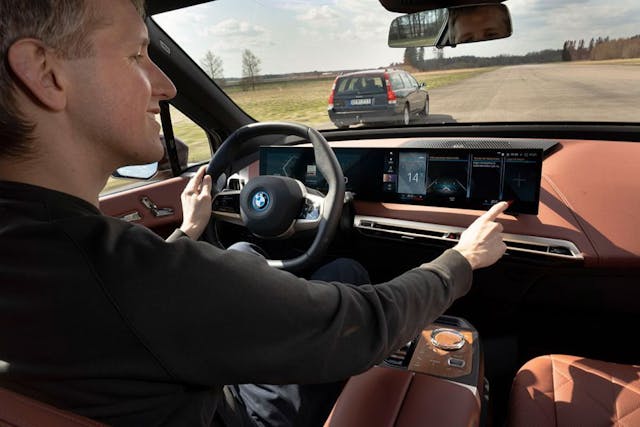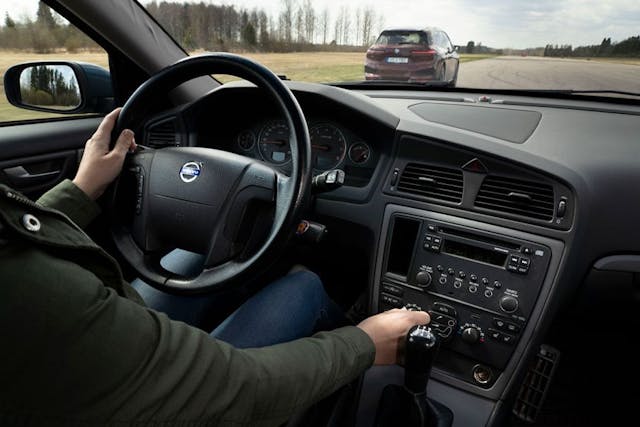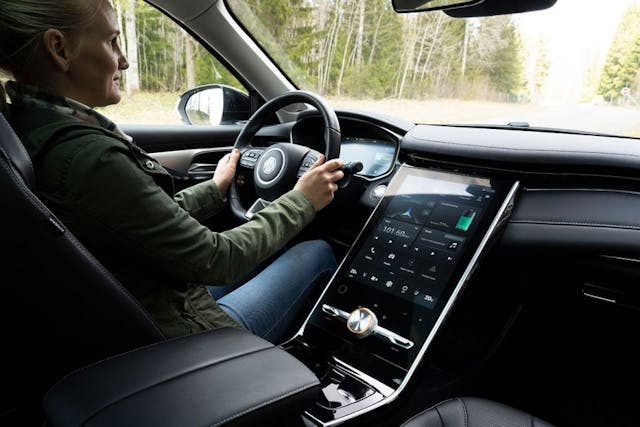Opinion: Touchscreens in cars are a menace
The Swedes are a curious bunch. They build the world’s safest cars but from little more than walking age they’ll teach their children how to fell a tree with an axe, catch fish from the surface of a (hopefully) frozen lake, and make a warming fire outdoors— using a tree trunk, a chainsaw, and a can of gasoline.
They are sensible and considerate in working hours, but can be wild and uninhibited when night falls and the drinks flow. Obeying speed limits comes naturally, yet few nations’ drivers are better at drifting a car sideways through a snow-covered pine forest.
In some small way, this explains why, when Sweden’s car journalists gets their hands on a new vehicle, they don’t do what Americans, Brits, and Germans do, which is skid it around a test track or racing circuit until its tires resemble balls of wire wool and the brakes appear to have erupted into a small bonfire. Oh no. The Swedes turn all serious, devising tests for real-world driving scenarios which you or I are unlikely to encounter in our lifetime but the likes of which keep Sweden’s reviewers awake at night.

Remember the moose test? In 1997, a simple, standard testing procedure caused the board of Mercedes-Benz to drop everything they were doing—namely, launching the new Maybach Concept to the world’s media, at the Tokyo Motor Show—and fly back to Stuttgart, making damage-mitigation plans as they went which would have to be presented to Jüergen Schrempp, Mercedes’ CEO, the moment they touched down.
The moose test was the work of Teknikens Värld, a Swedish car magazine. It was designed to probe at a car’s handling characteristics during a sudden, emergency lane change … such as when a 1300-pound moose stepped out in front of your Saab or Volvo.
That simple test—to which Mercedes had not subjected it’s new, mass-market A-Class—literally tripped up the company’s most significant car of the moment. It’s estimated that a recall of the first 17,000 cars on the road, and subsequent fitment of an Electronic Stability Program (ESP) as standard cost the company more than €2.5 billion more than it had intended to invest in the project.
So you can understand that when Sweden’s car reviewers are presented with modern cars with functions mostly operated through touchscreen systems, they don’t reach for their iPhone to stream their favorite podcast, or ask the car to order them a Foodora meal (their DoorDash equivalent). They search for flaws.

How, they ask, is scrolling, swiping and jabbing your way through numerous menus safer than using conventional buttons or stalks on the steering column?
And, of course, they don’t just pose the question, they go in search of the answer. “They” in this case is Vi Bilägare, a consumer magazine that has been doing sensible things with cars since 1930.
The answer doesn’t make for comfortable reading, at least, it doesn’t if you’re a car manufacturer that claims touchscreens offer progress through convenience, extra features, upgrades over time and, er, a virtual whoopee cushion. Using a 2005-era Volvo V70 as a benchmark, Vi Bilägare magazine established how long it takes the average driver to perform common tasks when at the wheel. Operations were as follows:changing the temperature of the climate control, choosing a specific radio station, resetting the trip computer, and lowering the brightness of the instruments.

So far, so straightforward. The driver had to perform the tasks while traveling at motorway speeds, and had had the opportunity to familiarize themselves with all the cars being tested. So, let’s cut to the chase; if you performed the tasks in the Volvo V70 while driving, how long would it take and how far would you have gone? It took all of 10 seconds and the distance travelled was 306 meters (about 1000 feet).
The worst offender of the new cars was an MG Marvel R, an electric, family-sized SUV, which took 47 seconds and covered 1372 meters (4500 feet) in that time.
Ah, you may be scoffing at this point. That electric MG is merely badge-engineered Chinese car that can’t compete with the might of Europe’s prestigious carmakers. If only. The next worst offender was BMW’s new flagship, the iX. Its driver needed 30 seconds to perform the simple tasks, taking them 928 meters (3044 feet) down the path. The acclaimed Hyundai Ioniq 5 took 27 seconds and 815 meters (2673 feet). Pin-up for the Tesla fan club, the Model 3, needed 24 seconds and 717 meters (2352 feet), while Volkswagen’s post-Dieselgate rush job, the poorly received ID.3, clocked in at 26 seconds and 786 meters (2578 feet).

Cars, you may have noticed, have never been more expensive. And as automakers transition to electric power, that cost burden to the consumer is only going to increase, at least in the short term. Many manufacturers say they will phase out high-volume, low-margin cheap cars in favor of posh and pricey alternatives that come packed with profit.
That escalating cost is also partly because carmakers can’t justify fitting small cars with all the safety equipment that will be mandatory in the future. Yet the same safety bodies and rule makers, who are forcing expense upon consumers in the name of our well-being, have buried their heads in the sand over touchscreen tech in cars.
If I said to you, “I’m rubbish at using an iPad; would you send a message for me and then check the weather, please?” while you were driving, you’d tell me where to shove it. Yet these screens have proliferated for reasons of … you guessed it, cost.
Stuff you and I knew was flawed is being forced on us whether we like it or not.
As infotainment systems continue to develop, more independent testers should take a leaf out of Teknikens Värld’s and Vi Bilägare’s book and highlight the hidden dangers of “progress.”
Check out the Hagerty Media homepage so you don’t miss a single story, or better yet, bookmark it.

